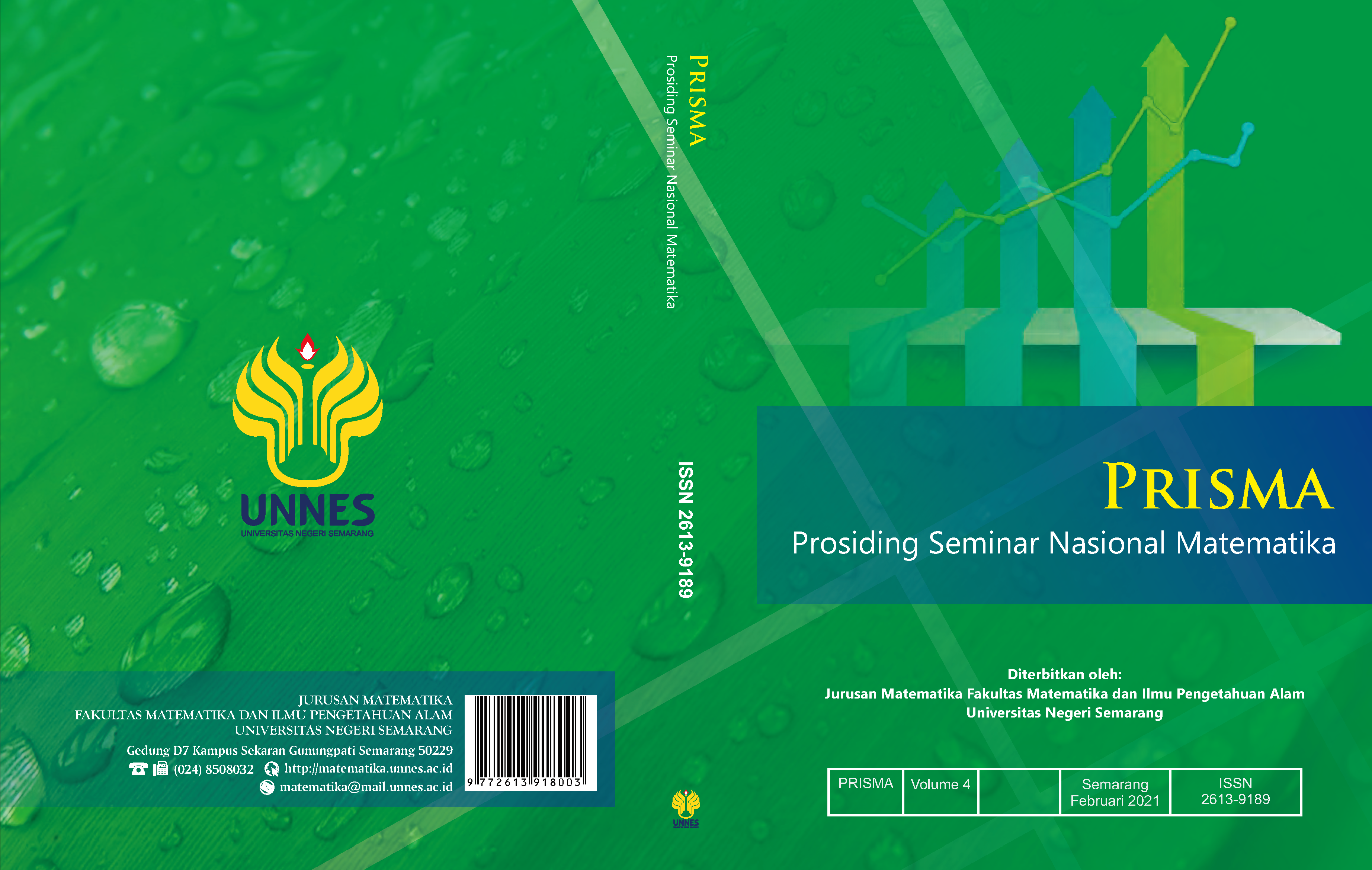Kemampuan Representasi Visual Siswa dalam Memecahkan Masalah Sistem Koordinat Kartesius
Main Article Content
Abstract
Penelitian ini bertujuan untuk mendeskripsikan kemampuan representasi visual siswa dalam memecahkan masalah Sistem Koordinat Kartesius. Jenis penelitian yang dilakukan adalah Desskripsi Kualitatif, yaitu mendeskripsikan kemampuan representasi visual siswa kelas VIII A MTs Negeri 3 Banjarnegara. Teknik pengambilan sampel menggunakan teknik purposive sampling. Teknik pengambilan data menggunakan tes, dokumentasi, dan wawancara, sedangkan teknik analisis data menggunakan tahapan, yaitu: pegumpulan data, reduksi data, penyajian data, dan kesimpulan. Hasil penelitian menunjukkan bahwa siswa kelompok atas dan bawah cenderung mampu menggambarkan koordinat kartesius yang diketahui maupun yang ditanyakan dengan benar. Siswa pada kelompok bawah cenderung kurang teliti dalam mengerjakan soal dan kesulitan dalam menghitung luas bangun segiempat karena kurangnya pemahaman mereka tentang materi segiempat.
Article Details
References
Anwar, R. B., & Rahmawati, D. (2017). Symbolic and Verbal Representation Process of Student in Solving Mathematics Problem Based Polya’s Stages. International Education Studies, 10(10), 20–28. https://doi.org/10.5539/ies.v10n10p20
Bakar, K. A., Yunus, F., Mohamed, S., & Karim, A. A. (2020). Addition concept through the lenses of young children: Creating visual representation with digital cameras. Eurasia Journal of Mathematics, Science and Technology Education, 16(6), 1–11. https://doi.org/10.29333/EJMSTE/7950
Fuad, M. N. (2016). Representasi Matematis Siswa SMA dalam Memecahkan Masalah Persamaan Kuadrat Ditinjau dari Perbedaan Gender. Kreano, Jurnal Matematika Kreatif-Inovatif, 7(2), 145–152. https://doi.org/10.15294/kreano.v7i2.5854
Hijriani, L., Rahardjo, S., & Rahardi, R. (2018). Deskripsi Representasi Matematis Siswa SMP dalam Menyelesaikan Soal PISA. Jurnal Pendidikan: Teori, Penelitian, Dan Pengembangan, 3(5), 603–607. http://journal.um.ac.id/index.php/jptpp/
Laelasari, Darhim, & Prabawanto, S. (2020). Representation skills students reviewed from the prior knowledge through realistic mathematics education in a linear material program. Journal of Physics: Conference Series, 1613, 012012. https://doi.org/10.1088/1742-6596/1613/1/012012
Levenberg, I. (2015). Information on Coordinate System as a Tool for Developing Mathematical Thinking. International Journal of Contemporary Educational Research, 2(1), 46–53.
Mahendra, N. R., Isnarto, & Mulyono. (2020). Mathematics Representation Ability Viewed from Adversity Quotient in SAVI Learning. Unnes Journal of Mathematics Education Research, 9(2), 199–207. [email protected]
Nadia, L. N., & Waluyo, S. T. B. (2017). Analisis Kemampuan Representasi Matematis Ditinjau dari Self Efficacy Peserta Didik melalui Inductive Discovery Learning. Unnes Journal of Mathematics Education Research, 6(2), 242–250.
Raftopoulos, A. (2003). Cartesian analysis and synthesis. Studies in History and Philosophy of Science Part A, 34(2), 265–308. https://doi.org/10.1016/S0039-3681(03)00026-8
Supandi, S., Waluya, S. B., Rochmad, R., Suyitno, H., & Dewi, K. (2018). Think-Talk-Write Model for Improving Students’ Abilities in Mathematical Representation. International Journal of Instruction, 11(3), 77–90.
Syahputra, E., & Marpaung, R. (2016). Students’ Mathematics Representation and the Alternative Solutions. Proceedings of the 1st Annual International Seminar on Transformative Education and Educational Leadership (AISTEEL), 1, 260–266. https://www.researchgate.net/publication/321382347%0AStudents’
Tillema, E., & Gatza, A. (2019). Helping Students Explore the Cartesian Coordinate System. Indiana Mathematics Teacher, 8–12.
Umbara, U., Munir, M., Susilana, R., & Puadi, E. F. W. (2019). Increase Representation in Mathematics Classes: Effects of Computer Assisted Instruction Development with Hippo Animator. International Electronic Journal of Mathematics Education, 15(2), 1–14. https://doi.org/10.29333/iejme/6262
Zuhrotunnisa, Z., Astuti, R. P., & Oetami, W. (2020). Kesalahan Siswa dalam Mengerjakan Soal Matematika Ditinjau dari Gender. AlphaMath : Journal of Mathematics Education, 5(1), 40. https://doi.org/10.30595/alphamath.v5i1.7350
